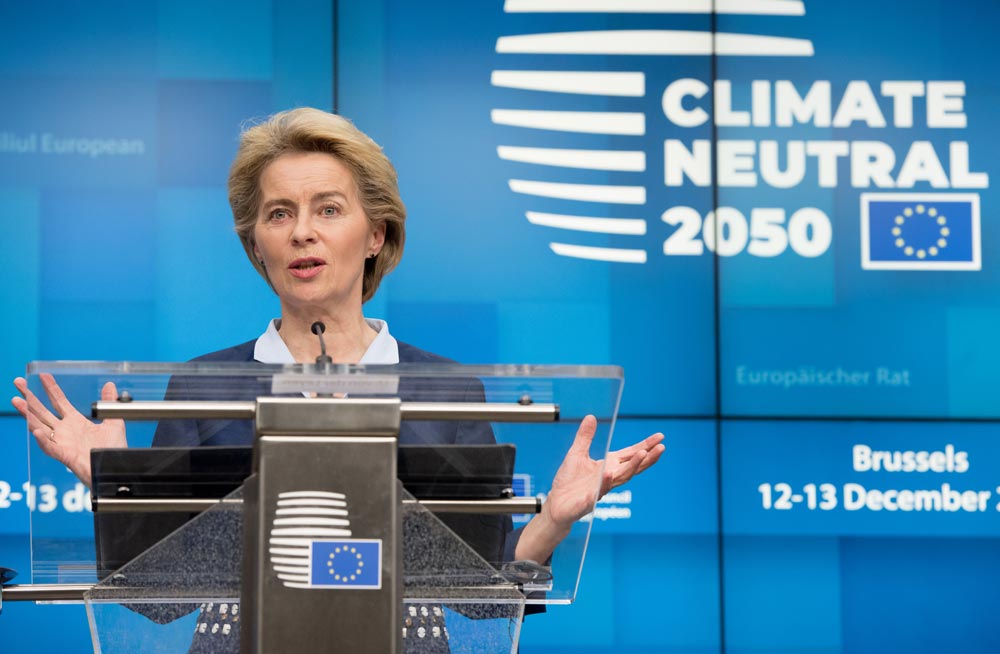What is the EU doing to improve Air Quality?
In the last decade, the EU and its Members States have moved forward in an attempt to further coordinating policies and measures that address the issues related to the energy performance of buildings, renewable energy penetration, energy efficiency, and air quality.
This coordinated approach represents a major challenge as it put in place a policy framework to deliver on EU pledges under the Paris Agreement.
At national level, Member States have worked to establish a 10-year integrated National Energy and Climate Plans (NECPs) for the period from 2021 to 2030. These plans will set the scene for future actions and are key to achieving carbon neutrality.
At EU level, several legislations have been implemented or are currently being discussed in an attempt to deliver on its commitments to reduce greenhouse gas emissions and to deliver secure, affordable and sustainable energy for its citizens.
But to instigate real change, more must be done. Under the European Green Deal, energy performance and efficiency are top on the list of priorities needed to achieve a socially fair and cost-effective transition to a climate neutral economy by 2050. It is essential that higher RES penetration and increased energy efficiency are the key drivers behind this process.

Policy 1 – Renovation Wave
The Renovation Wave initiative is the European Commission plan to invest in building renovation, including renewables uptake. The initiative is part of the European Green Deal and one of the priorities in the NextGenerationEU recovery plan. After the European Parliament adopted its priorities on energy efficiency in the buildings, the Strategy will be launched in October.
The renovation wave will address current low decarbonisation and renovation rates of around 1% across the EU and tackle the underlying barriers for improving the energy efficiency of the EU building stock. Currently, roughly 75% of the building stock is energy inefficient, yet almost 80% of today’s buildings will still be in use in 2050.
The renovation wave initiative will build on measures agreed under the Clean energy for all Europeans package, notably the requirement for each EU country to publish a long-term building renovation strategy (LTRS), other aspects of the amending Directive on the Energy Performance of Buildings ((EU) 2018/844), and building-related aspects of each Member State’s national energy and climate plans (NECP).
Policy 2 – Air Quality Framework Directive
The Air Quality Framework Directive 96/62/EC was the first mechanism to establish standards for pollutants. Later (between 1996 and 2004) the so-called daughter directives followed. In 2008 the Ambient Air Quality Directive was adopted (2008/50/EC), which combined all the previous standards and added restrictions for the PM 2.5 fine particle matter.
Member States had to established zones and agglomerations on their territories in order to measure air pollution levels and report air quality data to the European Commission. Whenever pollution levels are above limit Member States will have to prepare an air quality plan or programme to address the issue. The information on air quality should be made publicly available.
Directive 2015/1480/EC described the rules concerning reference methods, data validation and location of sampling points for the assessment of ambient air quality.
Policy 3 – Renewable Energy and Energy Efficiency (Directives)
To achieve climate neutrality in 2050, the renewable energy sources (RES) must grow, in particular in sectors lagging behind such as heating and cooling. As the overall RES target by 2030 according to the (RED II) is 32 %, Member States have to develop national renewable energy action plans in line with the National Energy and Climate Plans. In the same line, RED II in art. 23 foresees an annual increase for RES in heating and cooling of 1.3 pp.
An increased use of biomass allows the EU not only to create more jobs locally and diversify the energy mix, but also to reduce GHG emissions. RED II establishes a series of criteria for biomass to be accounted as sustainable. This affects the whole supply chain, irrespective of the geographical origin of biomass.
Energy efficiency in buildings represents a complex challenge on the way to achieving climate neutrality. Costs of renovating, especially for old buildings, very often prevent homeowners form carrying them out. In different Member States the renovation rates vary between 0.4 and 1.2 % annually, which is not fast enough – the European Commission would like to double this rate.
In 2018 two important directives were revised: the Energy Performance of Buildings Directive (EPBD) 2010/31/EU and the Energy Efficiency Directive (EED) 2012/27/EU. In order to fulfill the mission and goals behind the Clean energy for all Europeans package, some important changes were implemented in the two directives. In terms of policy, Member States are required to assess the potential of efficient district heating and to prepare reinforced long-term renovation strategies for Member States. The strategies must be reflected in the National Energy and Climate Plans (NECPs) for the years 2021-2030, with the ultimate goal being to reach a combined 32.5 % energy efficiency target by 2030 for the EU.
Policy 4 – Bioenergy installations requirements (from BE website)
When it comes to biomass installations, two groups of products are subject to eco-design requirements:
- Solid fuel boilers with a rated heat output of 500 kW or less (Eco-design Directive Lot 15)
- Local space heaters with a nominal heat output of 50 kW or less (Eco-design Directive Lot 20)
The directives impose energy efficiency requirements, as well as emission limit values for OGC, CO, NOx and PM.
The same groups of biomass products are subject to eco-labelling requirements:
- Solid fuel boilers with a rated heat output of 70 kW or less (Energy Labelling Regulation Lot 15)
- Local space heaters with a nominal heat output of 50 kW or less (Energy Labelling Regulation Lot 20)
